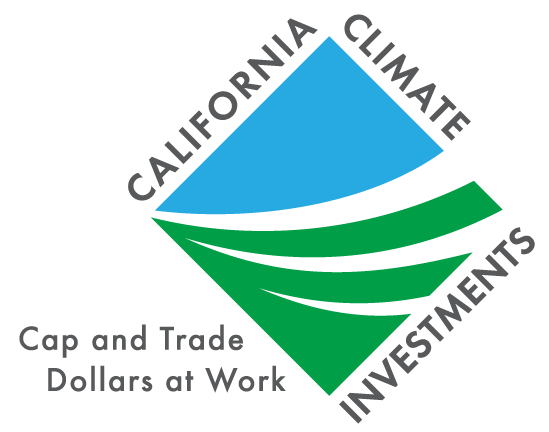CalRecycle’s Food Waste Prevention and Rescue Grant Program funds projects that lower overall greenhouse gas emissions in California through food waste prevention and rescue projects, which reduce the amount of food disposed in landfills. Receiving multiple grants from the program since fiscal year 2016-17, White Pony Express: Food Recovery for All is a food waste rescue project operating out of Pleasant Hill, California. It has received a total of $701,530 from California Climate Investments, as well as additional funding from CalRecycle’s Edible Food Recovery Grant Program. To learn more about the Food Recovery for All project, CalRecycle staff reached out to Merry Dempsey, Chief Operations Officer at White Pony Express, for answers to a few questions.
Merry Dempsey, Chief Operations Officer at White Pony Express
Tell us about your organization. What are some of its strengths? What are some of its greatest needs?
White Pony Express (WPE)’s mission is to eliminate hunger and poverty by delivering the abundance all around us to those in need—with love. Our guiding principle is unity: We honor the essential unity of all by making sure that no one suffers from want when there is a means of aiding them.
WPE rescues an average of 12,000 pounds of high-quality, largely perishable, surplus food every day, 7 days a week, from local grocers, retailers, wholesalers, farmers’ markets, restaurants, cafeterias, and caterers. Food is sorted according to the specific needs and requests of nonprofit partners, then delivered to 96 community partners that serve food-insecure Californians.
In 2013 WPE’s founder, Dr. Carol Weyland Conner, knew that in her county there was great wealth and surplus, but there were also deep pockets of need. She set out to build a model that could connect abundance and affluence with those in great need. Her concept was a volunteer-powered food recovery model where high-quality food is rescued and delivered to partner organizations that serve those in need.
Over the last 10 years the program has grown exponentially, rescuing and delivering 25+ million pounds of food. WPE provides fresh, healthy food to 96 community-based organizations; rescues food from 70 food purveyors and producers; deploys 700 volunteers; and generates thousands of hours of service among community volunteer partners. WPE has adapted to the community’s needs, especially during the pandemic and its aftermath, and now serves over 120,000 individuals each year, while significantly contributing to the elimination of food waste and harmful greenhouse gas emissions.
Tell us about the project. What will it do? What are the needs the project is addressing?
White Pony Express used 4 Food Waste Prevention & Rescue and Edible Food Recovery Grant awards to:
Increase food pickups from grocery stores, restaurants, farmers’ markets, and wholesalers.
Expand School Pantry Program to more schools with added staff, technology, and equipment.
Grow and staff its Food Rescue Hero app-based initiative.
Purchase refrigerated vehicles, cold storage capacity, software, and other equipment to get more food to people in need.
Build capacity with the purchase of a new walk-in refrigerator & cooler at our new larger warehouse space.
1 in 5 Californians are skipping meals or relying on food donations while we throw away 30% of our food supply—perfectly good food that could wipe out hunger three times over if it was recovered! WPE’s Food Rescue Program solves the logistical challenge that food markets face—what to do with surplus fresh food—by rescuing and delivering it. Operating 7 days a week, we customize every delivery to match the preferences of our 96 nonprofit recipients in the spirit of serving our one human family.
What impacts do you hope to see in your community as a result of this project?
Over the last few years WPE has outgrown our current warehouse space and we have used every last inch to expand our Food Rescue operations. Our new space has double the square footage of our current food rescue space and 5 times the refrigeration/freezer space.
White Pony Express Volunteers
What has been challenging in carrying out the project, and what have you learned from those challenges that could be useful for others to know?
The biggest challenge in carrying out this project has been the limited warehouse vacancy in our area. It took over 2 years and 3 different potential locations to finally secure a lease that allows for our planned expansion.
What are some elements of the project you think others should consider incorporating into their projects?
For other food rescue organizations, I would highly recommend investing in technology. The addition of our Food Rescue Hero app has been a key to expanding our volunteer pool, pick up and distribution capabilities. More efficient scheduling has made it easier to distribute healthy perishable food faster to our neighbors in need throughout our county.
What advice do you have for others applying for funds? What have you learned from the application process that could be useful for others to know?
Apply! These CalRecycle grants have made a significant impact in supporting our growth, education, and expansion.
Is there anything else you’d like to share that we didn’t ask about?
Ending hunger and protecting our planet is attainable! Support from CalRecycle has been a key to our growth in these areas.
Who is involved in bringing the project to life?
Volunteers, our city, county and federal officials, local and international businesses (corporate sponsors, restaurants, hospitals, caterers, country clubs, farms).
What’s next for the project or for your community? What do you hope to build on for future improvements?
We continue to plan for growth in the Food Rescue space and are adding new food donors every month. We are on a mission to end hunger in our county with a scalable and replicable model that can and has been used to serve communities in California and throughout the world.
White Pony Express Team Members



